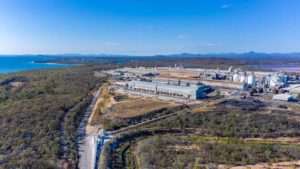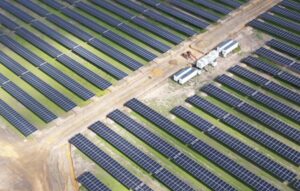This article was originally written and published on October 5, so some prices may have changed in meantime.
Victorian Energy Efficiency Certificates (VEECs)
Ongoing strength in submission numbers was not enough to prevent a recovery of sorts in the Victorian Energy Efficiency market in September. While the projected VEEC surplus continues to grow, the question now being asked is whether the market has bottomed or if this is just a temporary reprieve for a commodity destined to be weighed down further by oversupply.
September proved a bumpy month in the VEEC market which repeatedly tested the $14 mark on the downside and the $15 level on the upside. Ultimately the market finished the month closer to the latter, marking the first significant monthly recovery this year.
The spot VEEC market began the month by softening below $14.00 to a low of $13.70, which would also prove the low point for September (and indeed 2016 thus far). The market then recovered into the middle of the month reaching a high of $14.50 before once again turning. Within days the $14.00 level was once again breached, though it did not last long; following several trades in the $13.90s, the spot traded back into the low $14s as support returned. In the latter part of the month the market strengthened somewhat, twice reaching the $15 mark, only to promptly soften back to $14.75.
While there was a modest reduction in VEEC submissions across September, it occurred predominantly in the residential sector, with commercial lighting continuing to flourish. Despite the failure of submission numbers to fall considerably as some had expected, there were numerous points across the month where selling interest became hard to come by.
Interestingly, there are many who believe that VEEC submissions will continue to flow, at least for several more months given the large number of forward deals that have been agreed for settlement for the remainder of 2016 and into early 2017 at higher prices. This now means that a surplus for the 2016 compliance year of 3.5m is essentially a given and that something closer to 4m (or circa 70% of the 2017 target) appears increasingly likely.
Yet September delivered an interesting backhand to the normal market fundamental service game by revealing a disconnect between the ongoing strong submissions numbers (and hence the growing oversupply) and the preparedness of sellers to engage at or below $14.00. Such reluctance likely reflects the challenges that a $14 price presents to the lighting giveaway business model which, at such a price appears unviable. Yet it may also simply be the case that sellers opted to hold back in the hope that the market had bottomed and that something better was likely to come in the short term. Should a downward spiral once again play out, who knows what might happen.
The month ahead will be an interesting one for its ability to test out the longevity of this disconnect should submission numbers remain strong. It is also possible that it may reveal a meaningful reduction in submissions which may prove even more significant, though brave (and until now woefully incorrect) be he who calls the end of the commercial lighting boom.
New South Wales Energy Savings Certificates (ESCs)
In New South Wales the $5/MWh audit saga continued to play out with ESC registrations improving, yet still below the first half of the year. An initially modest decline in prices was followed by some fireworks late in the month as the market first plummeted before bouncing shortly afterwards.
The spot ESC market began the month by trading in the high $24s and essentially remained at that level until the final week of the month. Along the way the forward market was active with many strips (predominantly for 2017 delivery) trading in the mid to high $24s.
Late in the month however, the market lost ground rapidly on the back of a run of forward deals over a two day period, each significantly lower than the next. With the market trading in the mid $24s on a Thursday, by Friday afternoon it had reached $21.65, a drop of 13% on a handful of transactions. As is often the case following a drop of this magnitude, the market then found support and within days had recovered to be trading at $22.50 by month’s end.
The wash up of the scheme administrator’s attempts at shoring up the integrity of the minimum $5/MWh customer co-contribution rule via the current round of audits does not appear to have taken any major scalps, with significant delays in the normally lengthy audit process the apparent extent of the fall-out thus far. Indeed ESC registrations across the month, whilst remaining below the numbers seen across the first six months of the year did recover, indicating that participants continue to emerge from their audits unscathed.
As more creators emerge from their audits over the coming month, ESC registrations will continue to be closely observed to see whether a return to the kinds of numbers seen earlier in the year will be possible. If that is not the case and submissions continue to remain below the 75k figure per week, then the sizable 3.3m ESC surplus rolled over from the 2015 compliance period will be eroded somewhat. Whether that erosion is significant or not will likely dictate whether the market will remain supported or if there will be further losses set to come.
Marco Stella is Senior Broker, Environmental Markets at TFS Green Australia. The TFS Green Australia team provides project and transactional environmental market brokerage and data services, across all domestic and international renewable energy, energy efficiency and carbon markets.











